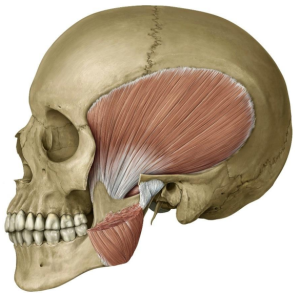The Temporalis Muscle

The temporalis muscle is one of the four muscles of mastication, which are primarily responsible for the movements of the jaw during chewing and speaking. The temporalis muscle is notable for its fan-shaped appearance and is a crucial component in the elevation and retraction of the mandible. Understanding the anatomy, function, and clinical significance of the temporalis muscle can provide valuable insights into its role in both normal mastication and potential disorders of the temporomandibular joint (TMJ).
| Key Facts | Details |
|---|---|
| Origin | Bony surfaces of the temporal fossa, inferior temporal line, and overlying temporal fascia. |
| Insertion | Medial aspect of the coronoid process of the mandible and anterior margin of the mandibular ramus, extending almost to the last molar tooth. |
| Action | Elevation of the mandible (closing the mouth), retraction of the mandible (pulling the jaw backward), and maintaining the resting position of the mandible. |
| Innervation | Deep temporal nerves, branches of the mandibular nerve (cranial nerve V3). |
| Blood Supply | Deep temporal arteries (branches of the maxillary artery) and anastomoses with branches of the middle temporal artery. |


